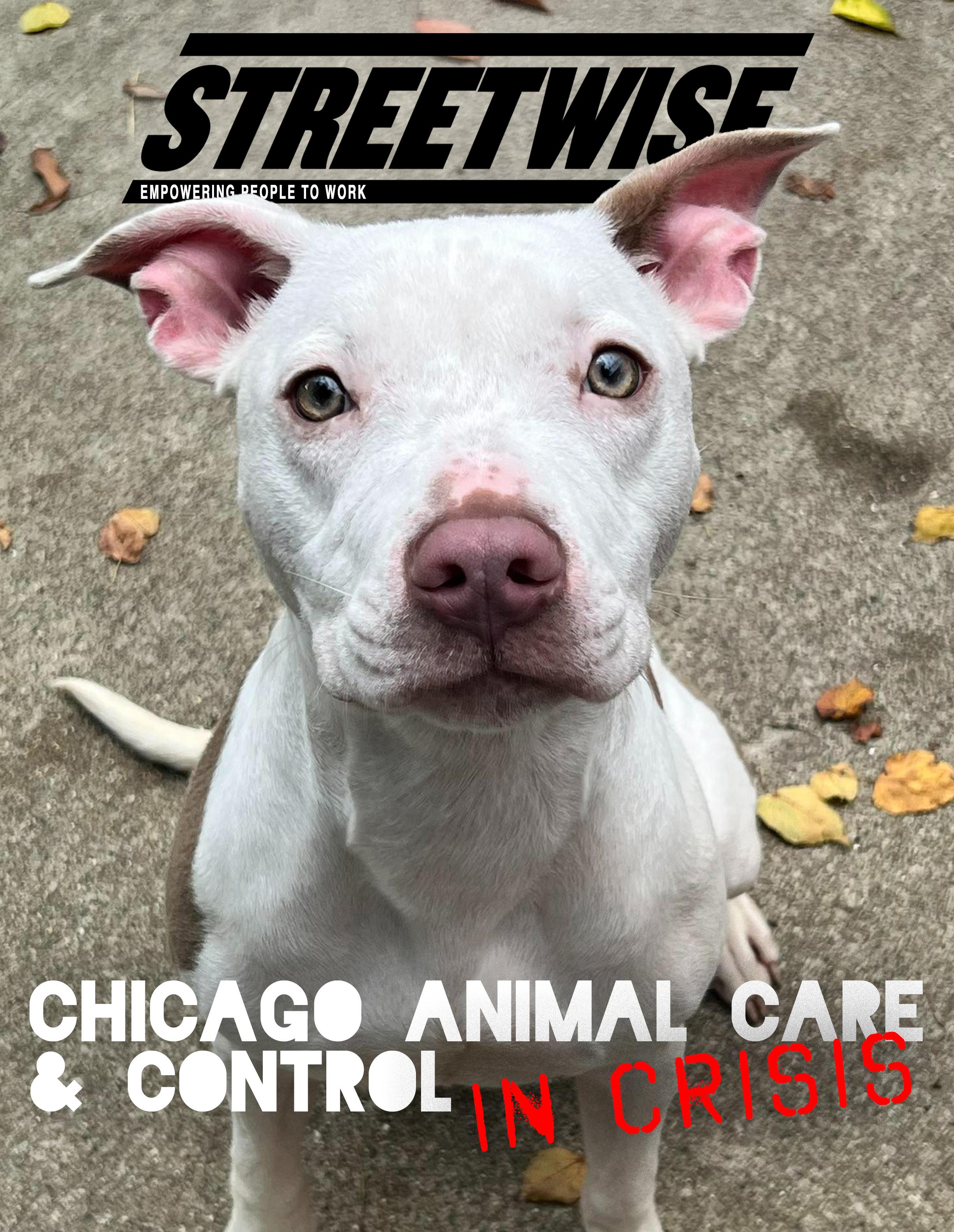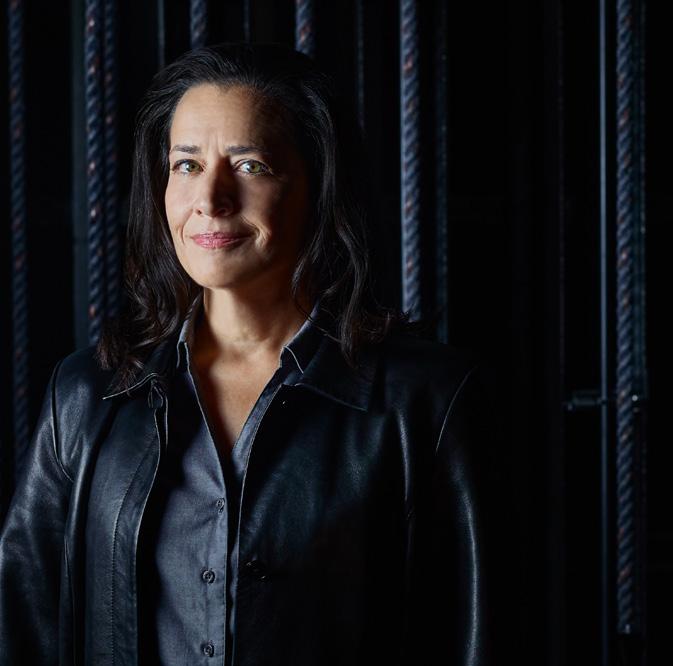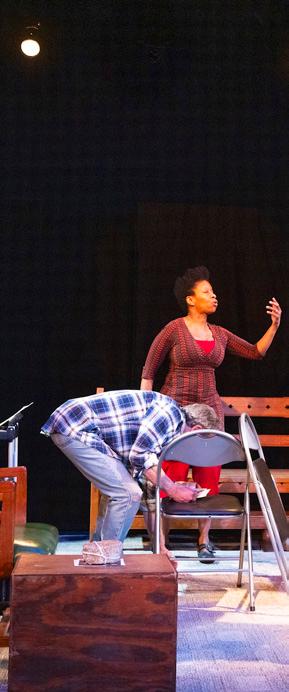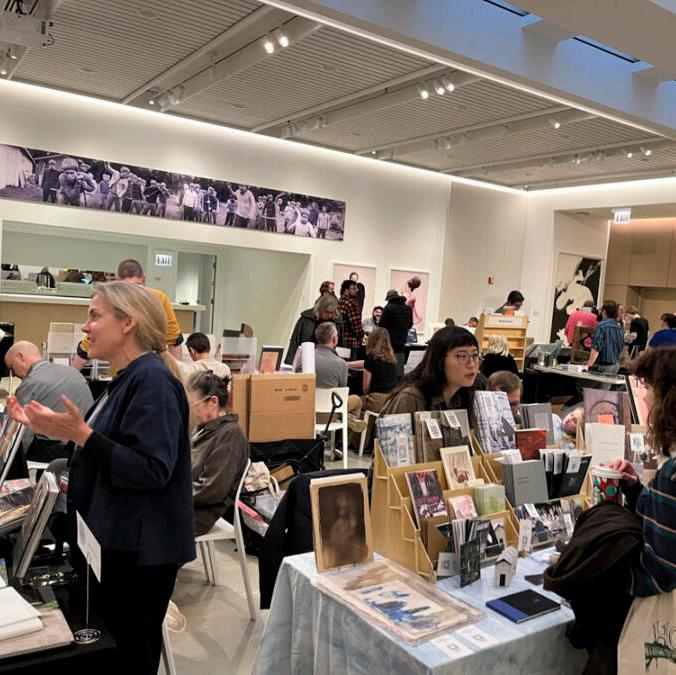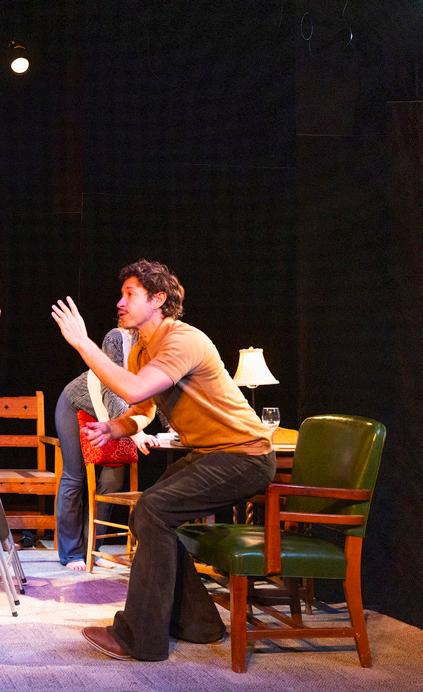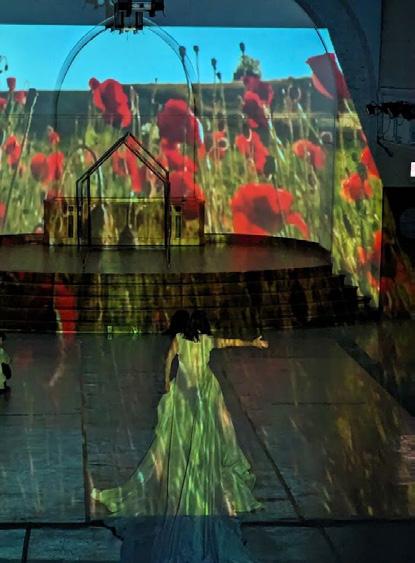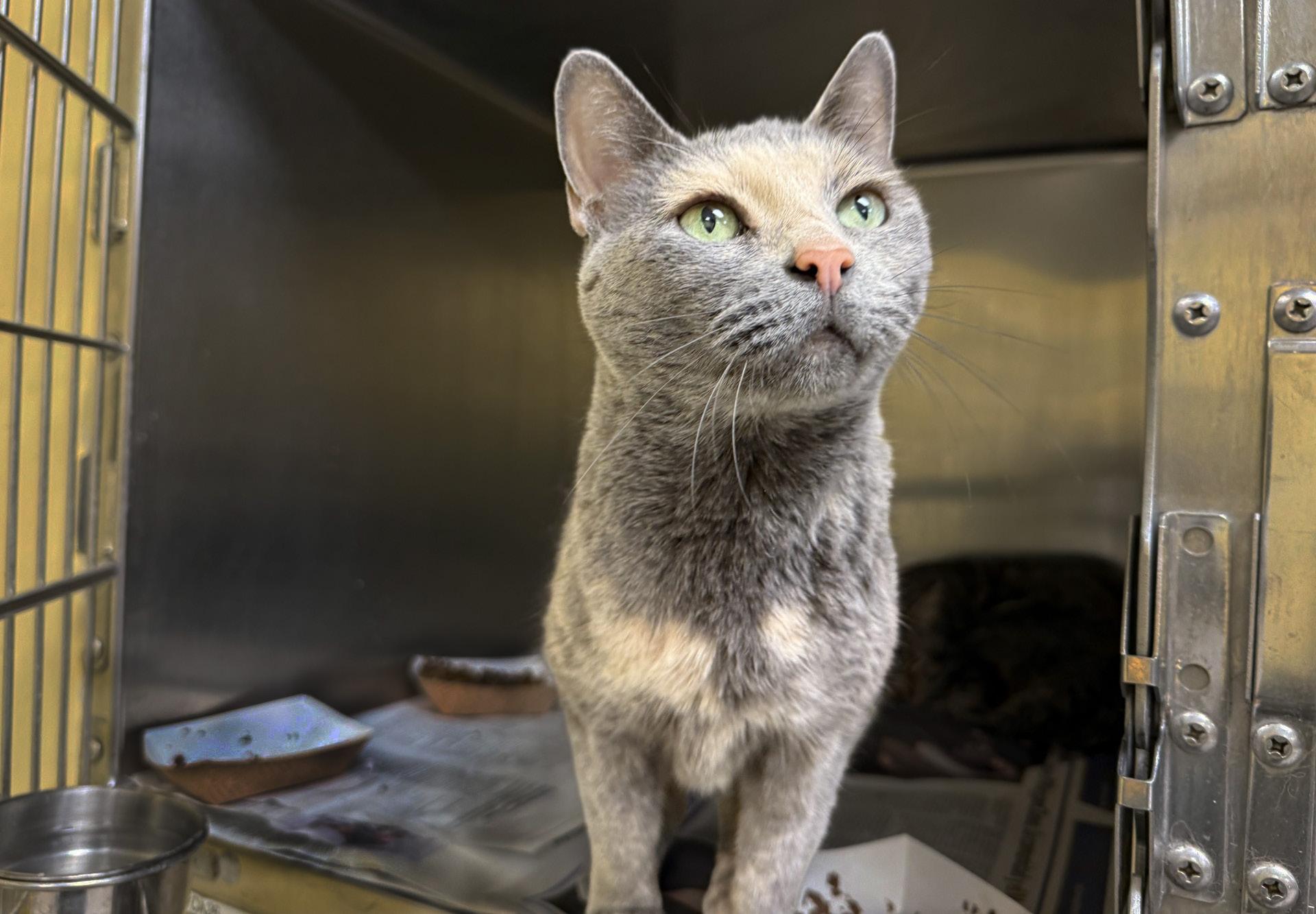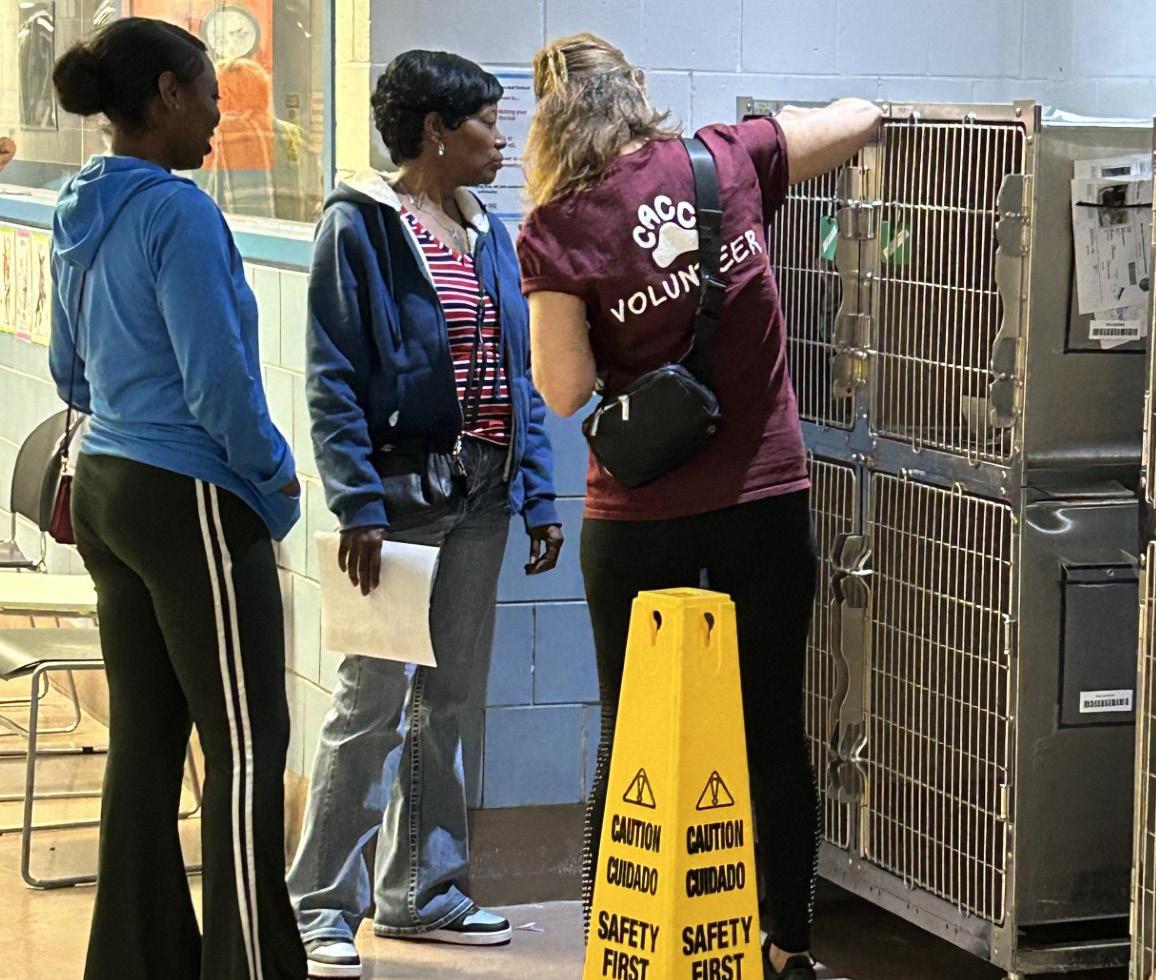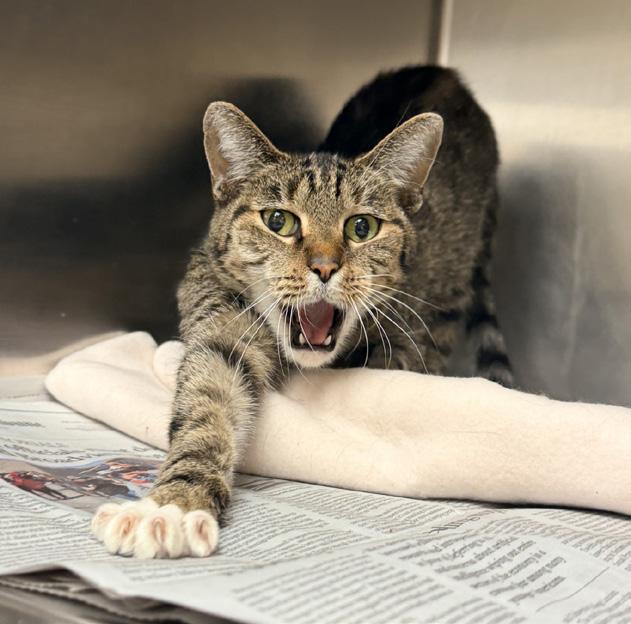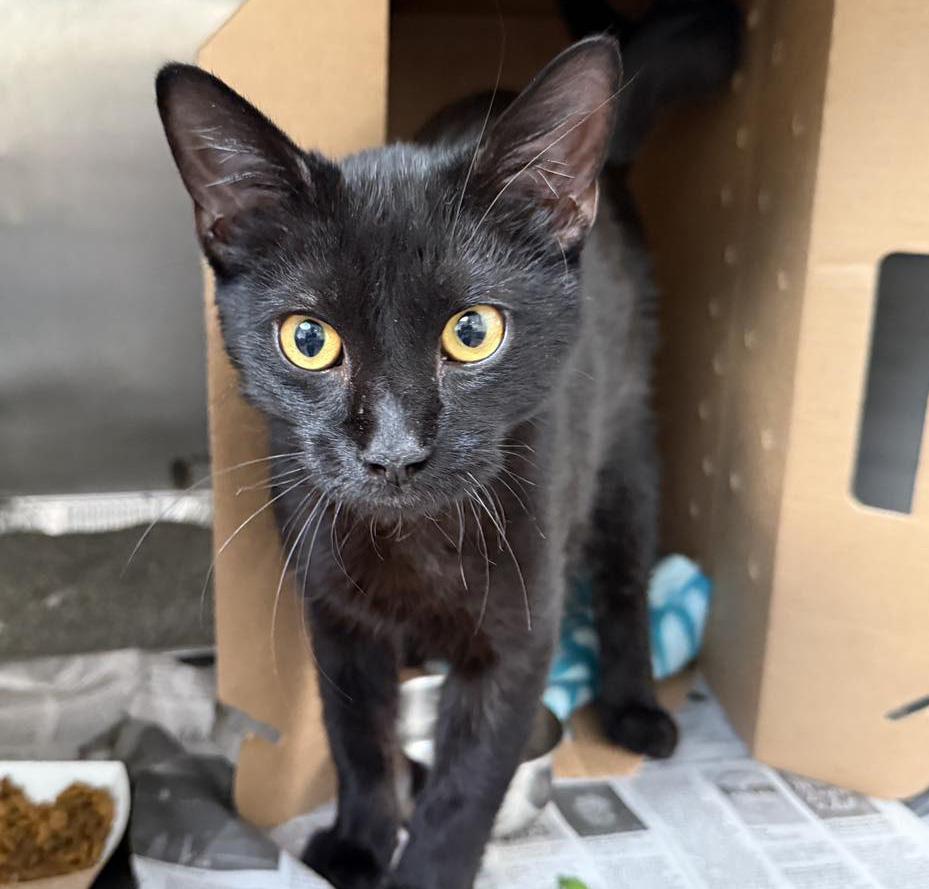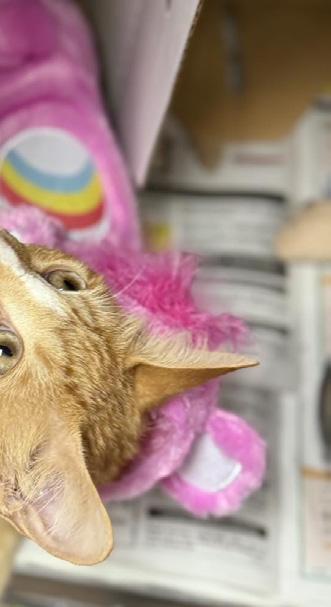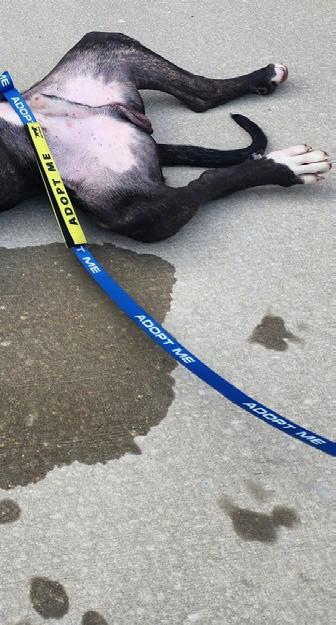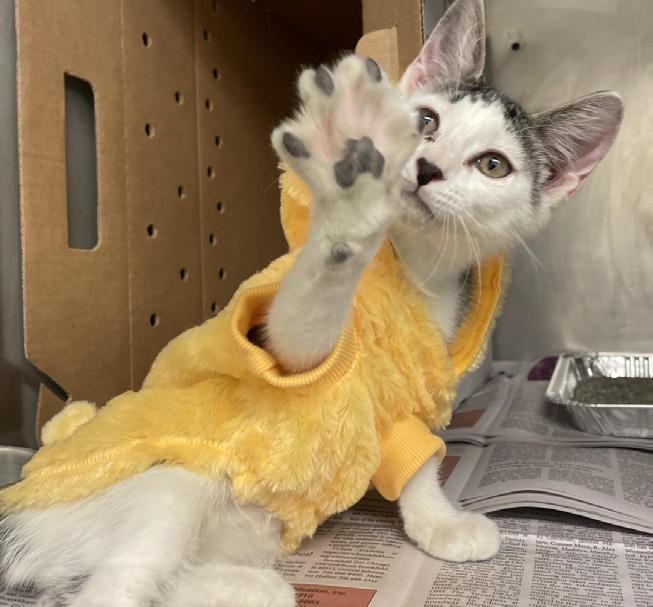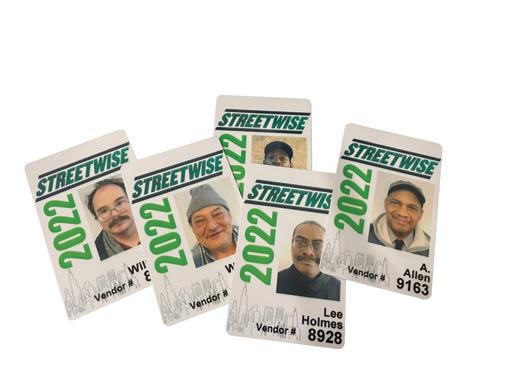ARTS & ENTERTAINMENT RECOMMENDATIONS
Compiled by Dave Hamilton
Off to See the Wizard!
‘The Land of Oz: Beyond the Page’
Timed with the release of”Wicked: For Good,” the sequel to last year’s blockbuster film, “Wicked,” “The Land of Oz: Beyond the Page” takes visitors back to the original 1939 inspiration. The installation will be on view in two galler ies, November 13 - March 15 at the Driehaus Museum, 50 E. Erie St. Curated by Laura Woolley, a memorabilia expert and consultant known for her appearances on “Antiques Roadshow” and her work at The Collec tor’s Lab, the exhibit showcases the imaginative artistry required to turn the classic children’s story into a beloved movie. Divided into three sections—Writing, Costume, and Production Design—the installation reveals how designers brought L. Frank Baum’s world to life. Highlights include a replica of Dorothy’s Ruby Red Slippers, an early draft of the script, a prototype of the iconic Flying Monkey costume, a character costume from Emerald City, and a replica of the Cowardly Lion’s Medal of Courage. Visitors will also see an original edition of the "Wizard of Oz" book, a historic telegram announcing the change from silver to ruby slippers, and a rare illustration of the Emerald City. Families, film lovers, and design enthusiasts alike will find something to spark their imaginations. Included with $20 museum admission.
Like No Play Before!
‘Action at a Distance… in 2025’
Santa Fe theater ensemble, Theater Grottesco, presents a limited Chicago engagement November 13 - 16 at Facility Theater, 1138 N. California Ave. “Action at a Distance … in 2025” offers a kaleidoscopic theatrical experience that is closer to music com position and dance, blending six simultaneous plays performed on a 10ft x 10ft stage by four actors. It is an original work of new theatrical form that breaches several of theatre’s conventional boundaries. Using techniques often found in film, musical composition and dance such as innovative physical “jump cuts” and “gestural choreography,” characters and actions depart from common representations of time and space, to create moments of astonishing synchronicity, while actors fluidly transform among multiple characters and interact across disparate scenes. “Action at a Distance … in 2025” follows the structural truths when people distraught and disconnected from one another live together, in imperceptible yet finely-tuned synchronicity, as do the actors on this stage. Much like the bustle of a crowded airport, "Action at a Distance" captures the unpredictability within human connections. Tickets are $15 - $30 at LisaFayAndJeffGlassmanDuo.org/tickets.
The Man, The Myth . . .
Chicago Opera Theater & Steppenwolf Present: ‘Rivalry, Myth, and the Legacy of Salieri’
Who was Antonio Salieri – envious schemer, misunderstood genius, or history’s fall guy? Immortalized in Peter Shaffer’s "Amadeus," Salieri remains one of the most intriguing and misunderstood figures in classical music. This special evening invites you to step into the drama and discover the man behind the myth. Bringing together voices from both the opera and theater worlds, the discussion will be moderated by Chicago Opera Theater’s Edlis Neeson General Director Lawrence Edelson, joined by conductor Christine Brandes (pictured), Steppenwolf Artistic Director Audrey Francis, and Jonathan L. Green, Steppen wolf’s director of new play development. November 19, 7 p.m., at the Driehaus Museum, 50 E. Erie St. FREE with RSVP at chicagooperatheater.org
Celebrating 50 Years!
Ensemble Español Spanish Dance Theater
Celebrating its 50th anniversary at The Auditorium Theater, 50 E. Ida B. Wells Drive, the world-renowned Chicago-based Spanish dance company brings the passionate and expressive rhythms of Spain to life with its expertise in flamenco, folkloric, contemporary and classical dance—all performed with precision, passion, and artistry. This milestone performance honors its founding artistic director the late Dame Libby Komaiko and its current artistic director and longtime company member Irma Suárez Ruiz, who began dancing with Dame Libby in 1979 and has established her own legacy of excellence and prominence as a dancer, choreographer, and arts leader. As a whole, the performance will commemorate the company’s rich legacy of bringing the spirit of Spain to Chicago and the world. Tickets start at $35 at auditoriumtheatre.org
20th-Century Masterpiece!
‘Carmina Burana’
Lyric Opera of Chicago, 20 N. Wacker Drive, presents Carl Orff’s “Carmina Burana,” November 14–18. For three performances only (11/14, 7 p.m.; 11/16, 2 p.m.; 11/18, 7 p.m.), Music Director Enrique Mazzola conducts the Lyric Opera Orchestra and Chorus in this 20th-century masterpiece, joined by soprano Jasmine Habersham, tenor David Portillo, baritone Ian Rucker, and the Uniting Voices Chicago children’s choir. From the thunderous opening chorus, "O Fortuna," to passages of hushed intimacy, “Carmina Burana” captures the full sweep of human experience in music that is at once visceral, dramatic, and unforgettable. Tickets start at $69 at lyricopera.org
The Bears' second Half
John: What are the Chicago Bears’s prospects for the second half of the season? It seems like they have improved from a year ago, when they were finding ways to lose close games. There’s some optimism, not necessarily for a Super Bowl, but that this team can be better.
Russell: It’s a lot better than it was last year at this time, when it was 4-3. The Cowboys played the Packers (5-1) and tied it up at 40 points, but the Bears beat Dallas. The defense is playing good. They are starting to get sacks, rushing the quarterback, getting some interceptions. Man, this team is fun to watch!
John: What do you think of the overall culture and coaching?
Allen: I think the Chicago Bears are doing very good. As of November 2, they were 5-3 in the NFC North. Last year at this time, they were 4-3 after losing 15-18 to the Washington Commanders and going downhill. But now
quarterback Caleb Williams is comfortable with offense. They’re protecting him pretty good and he knows how to throw that ball.
John: How about the coaching staff and the culture?
Allen: The defense has picked up and that’s gotta be due to coaching. The offense is protecting the QB a little bit better. The coaching staff is up to par as far as calling plays. The Bears are known for losing in the fourth quarter and the defense is almost guaranteeing they won’t, so I am looking for them to have a better year.
John: Caleb is not holding onto the ball as much. He’s making some big plays out of the pocket. The coaching staff has a lot to do with it. Ben Johnson is finding ways to win the game in the final two minutes – most NFL games come down to that.
Most of the teams that play in this league are basically onescore games: 17-14, 20-17. It’s the teams that have a healthy overall culture, which the Chicago Bears did not have a year ago -- but I believe they do now -- and the coaching staff, that is putting them in much better position. Last year, there was that Hail Mary TD at the clock by the Washington Commanders. The worst was that 20-23 Thanksgiving game against the Detroit Lions. I don’t know what Matt Eberflus was doing with that timeout and that clock. If Ben Johnson had been in charge, they probably would have gone into overtime, maybe even win it. It was probably the end of Eberflus as an NFL coach.
In the Mighty NFC North, you have Green Bay (5-2); the Bears and Detroit are 5-3, but Detroit is still ahead because they beat the Bears in week 2.
Russell: The Bears were in the same spot last year and went into a terrible losing streak. I like their running game and they’re passing the ball.
Allen: We mentioned the offense and the defense, let’s not forget the special teams. They got that new kicker, Jake Moody. I am looking forward to the playoffs, as long as we don’t collapse in the fourth quarter.
John: If the Bears don’t make the playoffs this year, it won’t be because of a collapse, but because the other teams were better. I think the fans will live with it better than last year because there are so many good teams in the NFC.
Any comments, suggestions or topic ideas for the SportsWise team? Email StreetWise Editor Suzanne Hanney at suzannestreetwise@yahoo.com
Vendors John Hagan, Russell Adams, and A. Allen chat about the world of sports.
Chicago Animal Care & Control In Crisis
There may be other important issues in the city right now, but Chicago Animal Care and Control (CACC) is in crisis, says the Chicago alderperson who was handcuffed by ICE agents while asking about a warrant for a detained man.
“When we have a shelter that is obviously overwhelmed by the amount of animals coming in and concerned about the type of processes to put in place in order for volunteers to help the department do the work and when we have to euthanize animals based on behavior because we don't have programming to have well-tempered dogs, it speaks to a crisis,” said Ald. Jessie Fuentes (26th ward). Fuentes sponsored a resolution supported by half Chicago’s 50-member City Council for an October 9 Health and Human Relations Committee hearing regarding the shelter’s challenges and resource needs.
After the hearing, Fuentes said the City Council will seek to appoint a permanent executive director – “whether [acting director] Susan Cappello or someone else” to fill a twoyear vacancy. The Council will also demand that public
health and safety positions at CACC not be furloughed or frozen, she said. CACC’s regular hearing for its portion of the upcoming City budget is scheduled for 9:30 a.m. November 13.
“Fund Chicago Animal Care & Control,” which is a Facebook group of non-affiliated pet lovers advocating for oversight of Chicago’s tax-funded animal shelter, wrote on its page that CACC has made progress over the last two decades, but risks sliding backward, with more animals being euthanized.
CACC has taken in 14,800 animals so far this year, compared to 12,633 in the same period last year. That’s the highest intake since 2013, when there were more than 17,000 animals.
Euthanizations so far this year have numbered 1,720 cats and dogs, based on medical, behavioral and spacebased decisions, compared to 1,613 in the same period last year.
by Suzanne Hanney
photos provided by Chicago Animal Care and Control Coco
There were also a record 2,652 adoptions, 816 strays returned to their owners and 7,195 transfers to “Homeward Bound” rescue partners – generally nonprofit agencies such as PAWS Chicago, One Tail at a Time and others.
“In order for CACC to go beyond the bare minimum, we need to increase funding,” said Anna Johnson, director of intakes and outcomes at One Tail at a Time (OTAT), one of 20 people who signed up to comment at the October 9 hearing, which also drew 243 emails from the public.
‘set up to faIl’
OTAT Co-founder Heather Owen, who was also a CACC commissioner from 2019-23, was more blunt. “They have set the department up to fail and they are failing.” She cited vacancies in administration, leadership and medical care and she thanked the council members. “I know there’s a lot going on in our city, so we appreciate you being here.”
Owen noted that Cappello, the deputy executive director, has served as acting executive director for two years while her former position remains vacant.
“Can any of you do your job without your deputy? I would run.” At the CACC headquarters, 2741 S. Western Ave., people line up to surrender their pets as Good Samaritans stand up to two hours to bring in animals they have found.
“And when you walk into the dog pavilion, you see row after row of stressed-out animals,” Owens said.
Many potential adopters are unwilling to linger in long lines and leave for other shelters. “That leads to deadly consequences and outcomes…a reflection of what happened to the budget for Chicago Animal Care and Control. It simply does not have the resources,” said Cynthia Kuck. Kuck is a volunteer with the PAWS Chicago Big Fix spay/neuter program who transports animals from CACC to the PAWS Lurie Clinic and back every day.
By law, animals must be spayed or neutered before adoption and, “the CACC medical team is stretched thin providing care for the animals who enter their doors,” according to the PAWS website. The Big Fix treated 931 animals last year.
Brick-and-mortar capacity at CACC is 225 dogs and 200 cats, but it is also a matter of personnel. Every animal should have at least 15 minutes of care and socializing daily and there just isn’t staff to do it, CACC Shelter Manager Arthur Hamilton said.
Ald. Ruth Cruz (30th ward) was stunned to hear Cappello say that dogs only get out every four days – if volunteers take them.
“I have fur babies and I cannot imagine not walking them three times a day. So much is happening in our city, but there is this too.” Constituents call her office saying she is not doing enough about CACC, Cruz said.
30 days behind bars
Being behind bars, surrounded by barking dogs, and only getting out intermittently, animals will deteriorate after 30 days, CACC Public Information Officer Armando Tejeda told StreetWise. “If it weren’t similar to a prison, we wouldn’t call them ‘rescue partners.’ No shelter has the capacity to give them the attention they crave.”
CACC is at physical capacity pretty much every day, Tejeda said, although rescue partners pull animals in their specialties. Adoptions for the first three quarters of the year were the highest they have ever been.
However, adoptions and rescues would have to number 50 or 60 daily in order to keep up with intake—both strays and owner surrenders, he said.
“The rise in stray animals and owner surrenders is part of a broader national trend seen across municipal shelters,” he said in an email. “In Chicago, we are seeing the effects of post-pandemic housing instability, inflation, and the ongoing affordability crisis. Many residents tell us they are struggling with veterinary costs, housing restrictions, or sudden life changes that make it difficult to keep their pets. We work closely with community partners to connect pet owners to food, supplies, and basic veterinary care so surrender is a last resort, but the volume continues to reflect how deeply economic and housing challenges affect families and their animals.”
Cappello said at the hearing that the predominance of bully breeds is one reason CACC has made more progress on cat adoptions than for dogs. Shelter Manager Hamilton said that large dogs get picked less often than small ones.
“Size and housing restrictions both play a role,” Tejeda wrote in the email. “Many rental properties and insurance policies restrict large dogs or specific breeds. Those factors, combined with the simple reality that larger dogs require more space and resources, can make it harder even for friendly, well-behaved dogs. We spend a great deal of time helping the public meet these dogs, understand their personalities, and see beyond the stereotype.” CACC has also looked to partner with rescues that specialize in bully breed advocacy.
The oversupply of dogs is matched by felines. “We are seeing more abandoned, friendly and stray cats than I have ever seen in 15 years,” Cats in Action Co-founder Liz Houtz told the City Council committee. “It’s epidemic. They are breeding on the streets faster than we can scoop them up, adopt them and shelter them. We are losing the battle.”
A Homeward Bound partner of CACC, Cats in Action has a mission to help people help outdoor cats – 1500 this year, mainly on the South Side -- through a process known as Trap, Neuter, Return (TNR), Houtz said.
“Almost every city in the U.S. includes money to spay/neuter free roaming cats; everyone is addressing the issues out there except Chicago,” she said, and cited a $500,000 grant for this purpose recently received by New York City.
ChICago budgets less for animal Control
CACC has a budget of $7,519,976, which numerous speakers said is lower than any major city in the U.S. They cited Houston, at nearly $16 million; and Los Angeles, $62 million. However, CBS News Los Angeles reported last April that in view of a $1 billion budget shortfall, LA would have to cut animal control by 10 percent.
Chicago animal control has 73 budgeted, FTE positions, including three full-time veterinarians. However, nine fulltime and four part-time positions are vacant, Cappello told the City Council committee. These positions include executive director (to be appointed by the mayor), staff assistant, animal control inspector, four animal control officers, animal care clerk, animal care aide and four hourly animal care clerks.
“If you would go out on the street, you would see how much suffering is out there,” Cats in Action volunteer Rosa Espinosa told the committee. “A lot of volunteers are doing it with our own money, our own time. It’s overwhelming and stressful, but we do it because we love cats and dogs. A lot of people are at full capacity. I don’t know what to do if I see a cat on the street. Should I leave him there? Can I get more cats in my house? Can I ask my friend? No, she’s full.”
Espinosa said later that for the last four years, she has fed about 40 cats in Austin and North Lawndale, sometimes with the help of friends. She described an orange cat who
won’t allow himself to be petted, but who comes every time he hears her car. Animal Control used to provide free sterilization, but the price went up to $15 before it was discontinued. Another agency charges $80, she said.
When people cannot afford their cat, they let it loose, said another TNR volunteer, Rose Gomez.
“They multiply, the suffering continues,” Gomez said. “The City has to provide the money in order to advocate for all the homelessness, especially with cats. The money to do TNR does not come from the city, or the clinics. That money has to be paid by somebody. Our hearts bleed for the animals and we are carrying the burden day in and day out. We need the money, we need a permanent director. Why is that so hard? That could be done tomorrow, get on it please.”
“Many of us lose money to do this work, but we still do it,” said Abigail Spencer, a volunteer in Woodlawn with Felines of Chicago and Hyde Park Cats and a cat colony caretaker in her ZIP code with PAWS Chicago. More money would mean people of lower income could become paid staff, Spencer said.
InvolvIng people at all eConomIC levels
More money would also mean that Chicago’s entire population could be involved with homeless pet rescue to the degree they wish and money could spill over to other rescues, she said, to applause.
Lap/ lys
CAt von d
Brisia Panthers
Haribo Blini
Later, Spencer said that pet homelessness echoes Chicago’s “Tale of Two Cities.”
“Homeless pets end up dying for factors that would not mean death in wealthier parts of town,” she said. Their owners might not be able to afford the extra “pet rent” landlords charge – or find a mental health professional to certify the pet as an emotional support animal (ESA) – which would exempt them from the added fee, for example. South Side owners might not be able to afford veterinary fees for vaccines, spay/neutering, or expensive illnesses.
“In Black and Brown communities, we’ve got so many issues, the last thing we worry about is rescuing cats and dogs,” said Lena Bivins, a community organizer who runs the nonprofits Perfect Pets and Our Legacy, in a Zoom call with Spencer. “There would be more if there were financial resources to help.”
In the last three years, Bivins has gotten nearly 100 cats spayed or neutered and given them to neighbors, who are impressed at their work with rats and who do take care of them.
Bivins describes herself as a go-between, a “resource queen” who can help people access food or vet care through other nonprofits. She would like to continue these education efforts in the community – even build a cat rescue on an empty lot.
Pet ownership is increasingly expensive in terms of food and veterinary costs, and that raises two ethical questions, Spencer and Bivins said.
First, is pet love restricted to the rich? And second, if only the affluent can be pet owners, will we solve pet overpopulation?
meetIng pet owners where they’re at
“What is happening on the South Side is, we’ve got to meet people where they’re at,” Spencer said. “They might be willing to keep animals at less than ideal circumstances.”
Most of all, Chicago animal control needs to put out coordinated, trusted messages that will prevent people from breeding bully dogs that wind up at CACC as adults. People also need to break the habit of releasing unsterilized cats that will multiply on the streets, Spencer said.
“CACC is working to bridge those divides by expanding outreach where the needs are greatest,” Tejeda said. “We have several nonprofit partners that provide pet food, vaccines, microchips, and other resources in neighborhoods disproportionately impacted by economic hardship. These partnerships are essential to keeping pets in homes and preventing unnecessary shelter intake. The geographic disparities you describe are very real, and our strategy acknowledges them through targeted events and resource distribution across all sides of the city.”
Tejeda told StreetWise the largest number of strays come from Roseland, Austin and Pilsen – the latter because CACC is headquartered there. A new volunteer position is promoting best practices on social media.
Friskie
Tex-Mex Knuckles Monkeybread
milo
giuseppe tammy mairead
“People don’t realize it’s not safe anymore to have inside/ outside pets,” Tejeda said. Good Samaritans sometimes bring in strays who may have been within two miles from their homes when they wandered when let out to relieve themselves. These pets may wind up adopted by someone else, or at worst – euthanized.
The public brings in 70% of CACC’s intake, Animal Control officers 19 percent and the Chicago Police Department the remaining 11%. There are two microchip scanners at each of CPD’s 22 district headquarters for pet finders who want to try to reunite dogs or cats with their owners.
holdIng onto progress
CACC has already built no-kill programs that worked but “the system is overwhelmed and without additional investment we risk losing the progress we fought so hard for, not for lack of will but lack of resources,” Jenny Schlueter testified on CACC’s behalf at the subject matter hearing. Schlueter is executive director of Heartland Animal Shelter; she was previously assistant to the director of CACC from September 2016 to July 2023 and earlier, development director of Tree House Humane Society.
Schlueter echoed other testimony that Chicago funds its animal control lower than any major city: $30 million for New York City and $11.5 million for Tampa, which took in the same number of animals.
CACC has three full-time budgeted veterinarians, while Heartland has two part-time and three vet techs – for 1500 animals, or one-tenth CACC’s population, she said.
“Currently, animals wait longer for care, get sicker, stay longer and get adopted less often,” she added.
But CACC “could be a community hub for animal care, youth jobs, volunteer engagement and family support – a point of pride.” What would help? More medical staff, vets, vet techs, volunteer coordinators to save lives and speed up adoptions; dedicated adoption staff to connect pets with families and expanded field operations to return lost pets to owners; low-cost vaccine so pet families wouldn’t have to surrender their pets; help with medical care from Fortune 500 companies headquartered here; easier volunteer onboarding than the current requirement for fingerprinting downtown, as city employees do.
“Mayor Johnson says Chicago is the best freaking city in the world. Let’s make our shelter the best freaking shelter.”
CHIcago housing initiative in 'a race against time'
by Suzanne Hanney
Trump Administration moves to rescind Affirmative Fair Housing Marketing regulations have prompted Chicago advocates to launch the “Civil Society Pilot Program:” a centralized list of affordable housing and wait lists in every neighborhood and ward.
“As the federal government abdicates its role in enforcing civil rights laws, the City of Chicago must step up at the local level to ensure that its citizens can access available affordable housing,” the Chicago Housing Initiative (CHI) and Ald. Maria Hadden (49th ward) said in prepared material ahead of an October 15 press conference. “It is certain the Trump Administration will continue to erode civil rights, as it moves to dissolve 14th Amendment protections.”
Ald. Hadden called the pilot program “a race against time to protect all types of units of housing. We know the Trump administration will allow attacks on fair housing, discrimination based on race, sex, color, religion, national origin, and disability status. Laws without enforcement are meaningless.”
Aside from preserving civil rights, the pilot program makes attaining housing more convenient, advocates said.
The pilot program “will tell us things we don’t know, such as how many affordable housing units are in Chicago, because right now we do not know,” said CHI Executive Director Don Washington. The process will still be controlled by individual wait lists, but denials would have to provide a reason.
This pilot program and working group will empower both the Department of Housing (DOH) and the Chicago City Council to better monitor housing funds and enforce fair housing laws, using an enhanced version of the Accountable Housing and Anti-Discrimination Act (AHAD) ordinance. The AHAD was introduced several years ago under the administration of Mayor Lori Lightfoot.
Led by CHI, the working group includes Access Living, the Lugenia Burns Hope Center, Metropolitan Tenants Organization, Neighbors for Affordable Housing on the Northwest Side, Pilsen Alliance, Organizing Neighborhoods for Equality: Northside, People for Community Recovery, Southside Together Organizing for Power and Northwest Side Housing Center. Joining them is a “unified front” of communitybased organizations, civil society groups, educational institutions, City Council members, state legislators and the Mayor’s Office.
Shawna Bowman is pastor of Friendship Presbyterian Church, at 5150 N. Milwaukee Ave., not a social worker. She’s begun helping people who are homeless and called looking for housing, “like a needle in a haystack. A lot of times housing that is listed is not up to date.” The centralized listing is a gift, she said.
“You can put your name out to the City of Chicago,” said Etta Davis of the Lugenia Burns Hope Center. “I don’t have money to spend running from one section of the city to another.”
People usually hear about housing from their friends: South Siders tell other South Siders and North Siders tell North Siders, Davis said. That method preserves the status quo, but a citywide list “is a transformative way of chipping away at the city’s segregation,” said Emily Coffey, director of equitable community development and housing at the Chicago Lawyers Committee for Civil Rights. "Affordable housing providers will have to report on why they are accepting or rejecting a tenant. We will know who follows fair housing laws and who needs to update practices.”
CHI Executive Director Don Washington, left, and Ald. Maria Hadden (49th Ward) (Suzanne Hanney photo).
